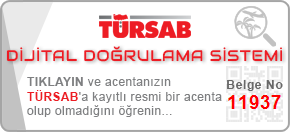1. Introduction: The Enduring Power of Myth in Modern Culture
Mythology has served as a foundational element of human culture for millennia, encapsulating stories that explain natural phenomena, human origins, and societal values. Across civilizations—from the Greek pantheon to Hindu epics—myths have provided a shared framework for understanding the world and humanity’s place within it. Today, these ancient stories continue to influence modern entertainment, transforming into movies, video games, comics, and digital narratives that resonate with contemporary audiences.
This article explores how myth roots underpin modern stories, demonstrating that despite evolving mediums, the core themes and archetypes remain remarkably consistent. By examining examples like myth-inspired characters and visual symbolism, we reveal the deep connections between ancient myth and current entertainment forms, enriching our appreciation and critical engagement with popular culture.
Contents
- The Origins of Myth: Universal Themes and Archetypes
- Myth in Modern Entertainment: From Oral Traditions to Digital Media
- Connecting Ancient Mythology to Modern Characters and Narratives
- Visual and Symbolic Language in Myth and Media
- Technological and Historical Influences on Myth Preservation and Reinterpretation
- Non-Obvious Dimensions: Myth, Identity, and Cultural Memory
- The Educational Value of Myth in Modern Media
- Case Study: «Le Zeus» — A Modern Interpretation of the Mythic Thunder God
- Conclusion: Embracing Myth’s Roots for a Richer Entertainment Experience
2. The Origins of Myth: Universal Themes and Archetypes
a. Common elements across mythologies (e.g., gods, heroes, monsters)
Despite geographical and cultural differences, myths often feature recurring elements such as powerful deities, heroic figures, and monstrous beings. These archetypes serve as symbolic tools to explore fundamental human concerns. For example, the hero’s journey—epitomized by figures like Hercules or Rama—embodies the universal quest for meaning and transformation.
b. The role of myth in explaining natural phenomena and human experience
Ancient peoples used mythic narratives to interpret natural events—thunderstorms, eclipses, and seasons—embedding these phenomena into stories involving gods and monsters. For instance, the Norse myth of Thor’s battles with Jörmungandr links the storm god to the unpredictable power of nature, illustrating how myths bridge observable reality and spiritual understanding.
c. The prevalence of thunder/deity figures in Indo-European mythologies
Thunder gods like Zeus in Greece, Thor in Norse tradition, and Indra in Vedic culture exemplify a cross-cultural archetype representing divine authority and power. These deities often wield lightning or storms, symbolizing their control over natural forces and societal order, making them central to both myth and ritual.
3. Myth in Modern Entertainment: From Oral Traditions to Digital Media
a. The evolution of storytelling mediums
Storytelling has transitioned from oral and written traditions to visual and interactive formats. The invention of the printing press, cinema, and now digital platforms has expanded the reach and complexity of narratives, allowing mythic themes to evolve and adapt.
b. How mythological themes adapt to contemporary formats (film, video games, comics)
Modern media utilize mythic archetypes to craft compelling stories. Films like Clash of the Titans or Thor draw directly from myth, reimagining gods and monsters for new audiences. Video games like God of War incorporate mythic narratives to enhance gameplay and storytelling depth, creating immersive worlds rooted in ancient themes.
c. Case study: The use of mythic archetypes in popular media
Popular media often employ mythic motifs—such as the hero’s journey, divine conflict, or apocalyptic battles—to evoke universal themes. For instance, Marvel’s Thor character adapts the Norse thunder god archetype, blending myth with modern heroism, illustrating the enduring relevance of these stories.
4. Connecting Ancient Mythology to Modern Characters and Narratives
a. The archetype of the thunder god: Zeus, Thor, and others
The thunder god archetype signifies divine authority, strength, and sometimes wrath. Zeus, with his lightning bolts, embodies leadership and sovereignty in Greek mythology; similarly, Thor’s hammer and storms symbolize protection and power in Norse myth. These figures serve as templates for modern characters portraying authority figures with formidable power.
b. How modern characters embody mythic traits (e.g., «Le Zeus» as a modern interpretation)
Contemporary interpretations, like the character «Le Zeus» in recent gaming narratives, exemplify how mythic archetypes are reimagined to reflect current cultural values. Such characters often combine divine traits with human flaws, making them relatable yet awe-inspiring. This blending reinforces the myth’s relevance and educational potential.
c. Examples of myth-inspired storylines in entertainment
Storylines involving divine conflicts, hero quests, and apocalyptic battles frequently draw from mythic sources. The Marvel Cinematic Universe, for example, adapts Norse and Greek mythologies to craft narratives that resonate with modern audiences, illustrating the seamless integration of ancient archetypes into contemporary storytelling.
5. Visual and Symbolic Language in Myth and Media
a. Iconography: color symbolism (e.g., Spartan red cloaks and their mythic connotations)
Colors and symbols carry deep mythic connotations. Spartan red cloaks evoke notions of heroism, sacrifice, and martial prowess—traits linked to mythic warriors. Such iconography helps audiences subconsciously connect visual cues with mythic ideals, reinforcing narrative themes.
b. The significance of armor, weapons, and symbols rooted in myth
Weapons like Thor’s hammer or Zeus’s lightning bolt are iconic symbols that convey divine power. Armor and emblems often incorporate mythic motifs, serving as visual shorthand for heroism, divine authority, or villainy—crucial for storytelling clarity and audience engagement.
c. The role of visual cues in conveying mythic themes to audiences
Visual language—through color palettes, costume design, and emblematic symbols—enables creators to embed mythic themes subtly. For example, the use of bright lightning effects during pivotal scenes immediately signals divine intervention or power, guiding audience perception seamlessly.
6. Technological and Historical Influences on Myth Preservation and Reinterpretation
a. The impact of technological evolution (from DOS hotkeys to modern interfaces) on storytelling
The evolution of technology has transformed how myths are preserved and retold. Early computer interfaces, like DOS hotkeys, simplified digital storytelling, while modern gaming engines and virtual reality enable immersive mythic worlds. These innovations facilitate deeper engagement and reinterpretation of ancient themes.
b. How historical contexts shape the retelling and adaptation of myths
Historical periods influence myth reinterpretations—ranging from Romantic nationalism to contemporary multicultural narratives—each adding new layers of meaning. For example, modern adaptations often embed social issues within mythic frameworks, reflecting current values.
c. The importance of understanding roots to appreciate modern entertainment deeply
Recognizing myth origins enriches our comprehension of modern stories, revealing their layered significance. A deeper understanding of archetypes and symbols allows audiences to appreciate the narrative’s richness and cultural continuity, elevating entertainment beyond superficial enjoyment.
7. Non-Obvious Dimensions: Myth, Identity, and Cultural Memory
a. Myth as a vehicle for cultural identity and ancestral memory
Myths serve as vessels for cultural identity, transmitting values, beliefs, and ancestral stories across generations. They create a shared sense of history and purpose, which modern entertainment often taps into to foster cultural pride and awareness.
b. The role of myths in shaping societal values through entertainment
Through stories of heroism, sacrifice, and divine justice, myths influence societal morals. Contemporary media perpetuates these values, shaping public perceptions and norms—highlighting the importance of understanding mythic roots in cultural literacy.
c. The subconscious influence of mythic structures in audience reception
Even when unaware, audiences respond to mythic patterns—such as the hero’s journey or divine conflict—because they resonate with innate psychological archetypes. This subconscious familiarity explains the enduring appeal of myth-inspired narratives.
8. The Educational Value of Myth in Modern Media
a. How entertainment can serve as a gateway to cultural literacy
Engaging with myth-inspired media offers an accessible entry point for learning about diverse cultures and histories. Recognizing mythic references enhances cultural literacy, fostering respect and curiosity about different civilizations.
b. The importance of recognizing mythic roots in understanding modern stories
Understanding the mythic foundations of stories helps decode underlying themes and moral messages. For example, knowing the archetype of the hero enhances appreciation of character development and plot symbolism.
c. The role of creators and consumers in maintaining mythic continuity
Storytellers have the responsibility to preserve mythic integrity, while consumers can deepen their understanding by exploring myth origins. This dynamic sustains the richness of cultural narratives across generations.
9. Case Study: «Le Zeus» — A Modern Interpretation of the Mythic Thunder God
a. How «Le Zeus» exemplifies mythic archetypes in contemporary gaming
«Le Zeus» exemplifies how modern games reinterpret ancient archetypes—embodying divine authority, wrath, and heroism—within engaging gameplay. It reflects the timeless appeal of the thunder god archetype, adapted to contemporary storytelling and interactivity.
b. The narrative and visual elements that draw from classical myth
The game employs visual cues like lightning effects, regal costumes, and mythic symbols to evoke the divine realm. The storyline often involves conflict with monsters or chaos, mirroring mythic tales of divine intervention and heroism. These elements foster an educational experience, introducing players to mythic themes subtly embedded within gameplay.
c. The cultural significance and educational potential of such adaptations
By integrating mythic archetypes into modern media, «Le Zeus» serves as a bridge connecting players with cultural heritage. It demonstrates how myth can be repurposed to teach history, values, and storytelling techniques, encouraging critical engagement beyond entertainment. To explore strategic approaches in such games, players might consider strategies like bolt & run free spins strategy, which exemplifies strategic thinking rooted in game design inspired by mythic themes.
10. Conclusion: Embracing Myth’s Roots for a Richer Entertainment Experience
The enduring power of myth in modern media highlights the interconnectedness of ancient stories and contemporary narratives. Recognizing these roots enriches our understanding and appreciation of entertainment, fostering a more critical and informed engagement. As technology and culture evolve, myth reinterpretations will continue to shape the future of storytelling, offering new avenues for education and cultural preservation.
By embracing the archetypes, symbols, and themes rooted in mythology, creators and audiences alike can ensure that these stories remain vital, relevant, and educational—bridging past and present for generations to come.


